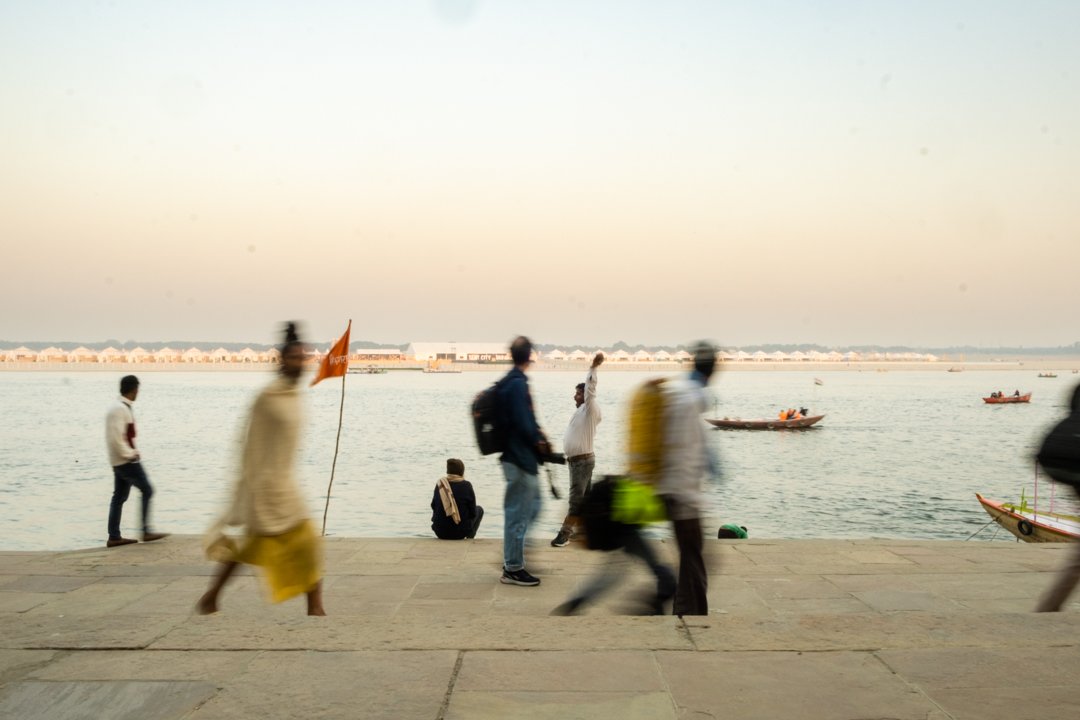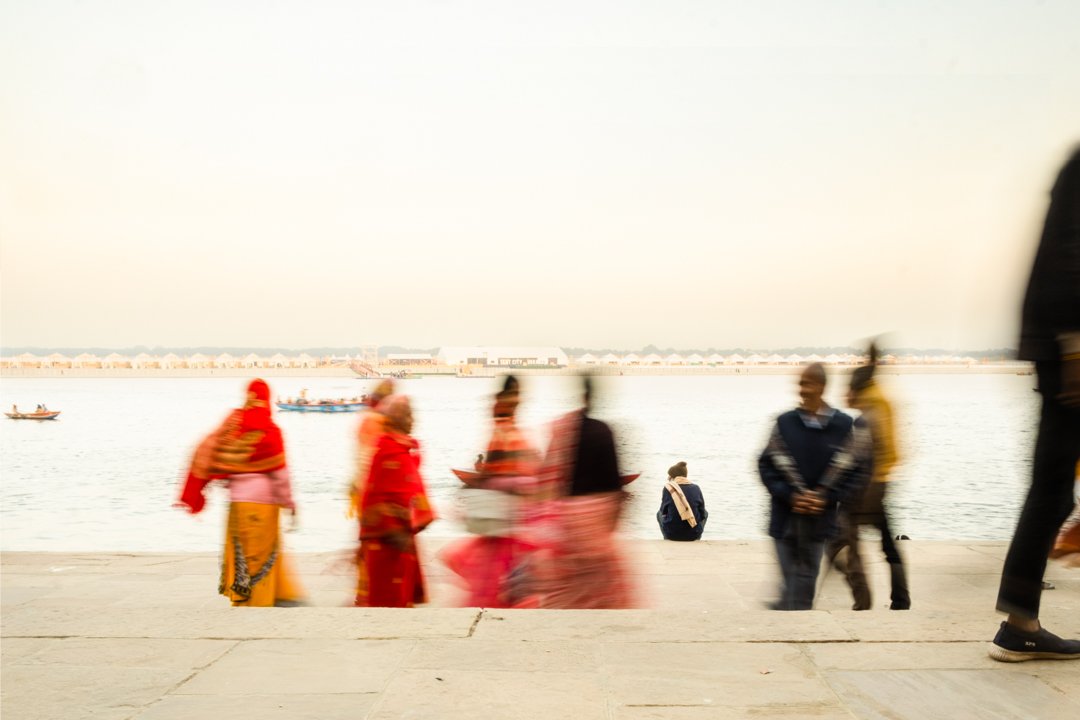Behind the ghats in the old, wonky, interlaced narrow alleys, the shops have been hit hard by covid and some traders are struggling to rebuild their lives. So many closed factories have killed the shopkeepers’ supply chains. Many have had to try and create new businesses. During Lockdown, some alleys have been brightly decorated. Building works are plentiful, the machinery isn’t.
If you don’t have a cow, milk is delivered straight to your jug - with a smile.
Some of the ghats are quieter and are a lovely place to sit and watch the world go by.




Our final evening in Varanasi had to be spent on the water again, this time we wanted to see the other side of the Ganges…
This has to be the biggest change we have seen here. We were shocked when we arrived to see what has become ‘the elephant in the room’ to the locals - Tent City, built by The Yogi Government over the other side of the river Ganges. What an empty, expensive eyesore. Created to cash in on the luxury end of the tourist industry and was inaugurated by PM Modi on the 13th Jan 2023. The tent city that resembles the sand dunes in Jaisalmer and Rann of Kutch in Gujarat apparently will showcase products from the East.
Apparently according to a newspaper ‘Tent City will add a new chapter to the tourism industry of the eastern UP and will bring financial benefits to the local people. The Tent City on the banks of the river Ganges will be a new chapter in the confluence of religion, spirituality and culture’.
I’m not wholly convinced. When I witness the numerous local boatsmen working so hard to make a living being overshadowed by huge Tent City party boats almost bullying them off the water, it doesn’t really enhance the culture or the spirituality of the place.
The locals still bathe, pray and play over this side but they are kept well away from Tent City. It is also where the families give up the cremated ashes to the holy river.
As we bid farewell to Varanasi, we spent our last evening on the water again with a local boatman. It gave us an opportunity to see the banks on other side of the Ganges.
We’ve tried hard to peel back a few more layers of this complicated city. It is breathtaking, frustrating, unique, chaotic and mesmerising and I doubt it will ever really face up to modernity.
Goodbye Varanasi, we have a plane to catch…